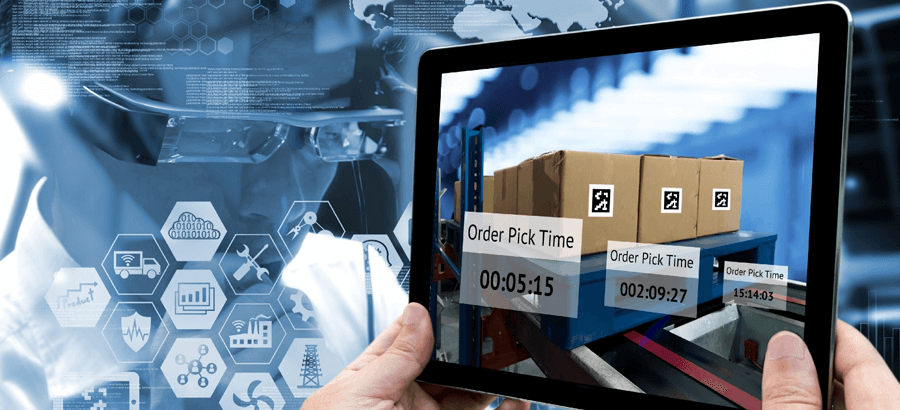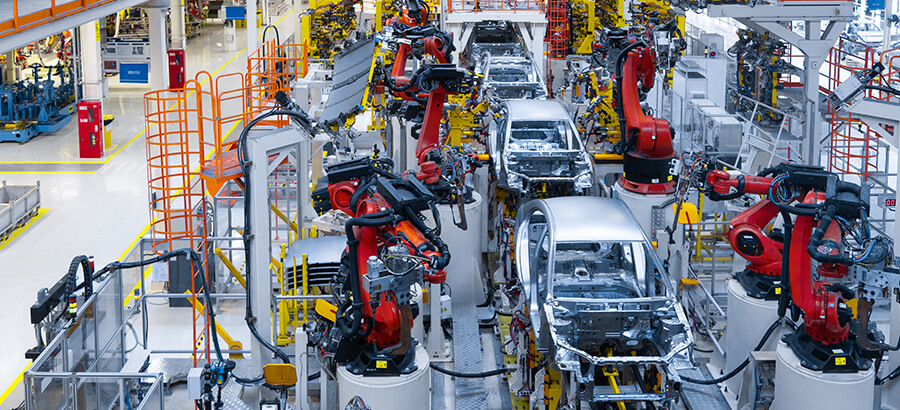It’s an exciting time to work in the field of supply chain. There’s a sense of change in the air – an awareness of the future unfolding. There are thought leaders who think we’re headed for a ‘Fourth Industrial Revolution’, an era of sustainable, socially conscious enterprises, underpinned by the intelligent interconnection of software and machines. For decision makers along the supply chain, it’s time for research – and for vision. In many instances, the adoption (or non-adoption) of today’s technologies will determine who thrives and who dies along the supply chains of tomorrow.
Let’s take a look at some of these converging technologies, and consider their application along the supply chain.
The Cloud
For small- to medium-sized businesses, access to the new competitive toolkit is taking place on the Cloud. Even beyond price considerations (which are significant) unlocking the power of nascent technologies makes the adoption of Cloud services a logical step in the evolution of most organizations. There are still good reasons to choose on premise or hybrid solutions, but extending the reach of an ERP to include data external to the company (such as weather, demographics, machine and sensor data), makes better sense on the Cloud.
There are more advantages to the Cloud than are dreamt of in anyone’s philosophy, but to my mind, the Cloud’s ability to facilitate highly collaborative ecosystems is exceptionally powerful. Both responsiveness and efficiency are enhanced by the flow of real-time data, which can help to minimize operational misalignment at the interface of supply chain stages.
Big Data and Advanced Analytics
By 2021 there will be more than 35 zettabytes of online data. For those who haven’t a clue what a zettabyte is (myself included) that’s 35,000,000,000,000,000,000,000 bytes of information. That’s an impressive amount of data, and most of it is unstructured, meaning that before the advent of Big Data it was largely inaccessible to computers. These days, with Big Data analytics programs, all that unstructured data can be collected, organized, and analyzed. This facilitates unprecedented accuracy and clarity of data, opening the door to better planning and decision-making.
Artificial Intelligence (AI)
When I think of AI, my mind wanders to Star Trek’s Data, rapidly processing technical information from the Enterprise’s computer, and instantly recommending a course of action. While we’re not quite ready to staff our distribution centres with androids, the capabilities of Artificial Intelligence will have enormous benefits along the supply chain. AI-driven ‘chatbots’ are already improving the User Experience for customers of shipping companies, making it easier to find store locations, determine shipping rates and track packages.
AI can draw insight from enormous data sets. That promises more accurate forecasting and lower market mediation costs (fewer stock-outs and mark-downs) – a major profit eater for innovative product manufacturers. Unprecedented control over data will allow for fine tuning, helping to tighten up end-to-end visibility, time-to-market, and overall agility. AI can also serve as a bridge between supply chains, facilitating a seamless flow of transactions. Of course, the most visible manifestation of AI, along with chatbots, will be fleets of autonomous delivery vehicles.
Robots & Cobots
Industrial robots are nothing new, but their presence along the supply chain is growing. When material handling is better handed off to a machine, especially in dangerous situations, or when precision is required, benefits in efficiency, responsiveness and safety naturally accrue.
What I find particularly interesting is the movement towards ‘cobots’, smaller, less expensive, more flexible robots that work side-by-side with humans. Cobots are becoming popular for pick and place, palletizing, and packaging. They will doubtless lead to significant reductions in turnaround times, and create increasingly responsive supply chains.
The Internet of Things (IoT)
The Internet of Things, sometimes referred to as the driver of Industry 4.0, ties together people, processes, data, and things, via a burgeoning universe of devices and sensors. Unlike older, ‘passive’ generations of sensors, IoT sensors are active. A connected pallet for example, can relay information on its whereabouts and condition. A connected machine can allow remote technicians to run diagnostics and initiate repair options, resulting in increased uptime and improved customer service. Importing data from IoT devices to an analytics platform will allow, for example, unprecedented stock control and precise inventory monitoring.
When it comes to transportation, IoT systems are already in use, optimizing fleet efficiencies through route planning, directing drivers to avoid traffic jams, maintaining temperatures for perishable goods, and helping carriers reduce ‘deadheads’ (the time trucks run without cargo). In addition, IoT technologies such as RFID provide the ability to track products throughout the global supply chain.
Some of the most powerful uses of the IoT are in the area of customer behavior. In-store sensors can track traffic and shopping patterns to yield clear insights into consumer behaviour, improving brand engagement and increasing sales. This depth of intelligence into supply and demand will benefit everyone along the supply chain.
There are, of course, more technologies to talk about than can fit in a single blog. In my next offering, aimed to coincide with the release of SYSPRO Harmony, I’ll talk about Social Media, and the exciting new possibilities that are opening up for problem solving and collaboration along the supply chain.
{{cta(‘bdcdda98-3863-44f9-9e98-785b4492e4b3’)}}







